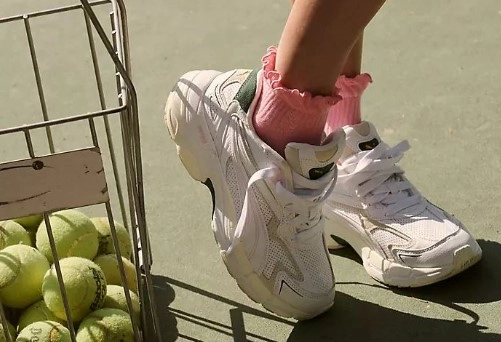Definition of Crew Socks

Crew socks are a popular sock style characterized by their length, which typically extends to the mid-calf area—longer than ankle socks but shorter than knee-high socks. This length strikes a practical balance, providing sufficient coverage and support without feeling restrictive or bulky. Because of this, crew socks have become a staple for a wide range of uses, from casual daily wear to professional and athletic activities.
Key Features of Crew Socks

A key design feature of crew socks is their elasticized ribbed cuff at the top. This cuff helps the sock maintain its position on the leg, preventing it from slipping down during movement. The ribbing not only enhances fit but also adds a subtle texture that is often associated with durability and quality in sock design.
When it comes to materials, crew socks are commonly made from a blend of fibers such as cotton, polyester, nylon, and spandex. Cotton provides breathability and comfort, making it ideal for everyday wear. Polyester and nylon add strength and durability, ensuring the socks hold up well under frequent use and washing. Spandex contributes essential stretch, allowing the sock to fit snugly around the calf and foot while retaining its shape over time. This blend of materials creates a sock that balances moisture management, flexibility, and longevity—qualities that are highly valued by both end customers and retailers.
For brands and retailers interested in exploring various sock styles, you can learn more about the differences and advantages of each type on our Sock Types page. This will help you identify which socks best suit your target market and product offerings.
The History and Evolution of Crew Socks

Crew socks trace their origins back to the United States Navy, where they were first designed to meet the specific needs of sailors. The military required socks that provided warmth, comfort, and reliable stay-up performance during long hours on ships and in varying weather conditions. The elastic ribbing and mid-calf length made crew socks ideal for these demands, helping protect sailors’ feet and lower legs while maintaining a neat, uniform appearance.
Over time, the practical qualities of crew socks—durability, support, and comfort—led to their adoption beyond the military. Crew socks gradually became popular among civilians and found roles in various sectors such as sports, industrial work, and everyday casual wear. Athletes appreciated the cushioning and support during training and competition, while workers valued the added protection and warmth in demanding environments. Today, crew socks are a common and versatile staple in wardrobes worldwide, respected for their blend of functionality and style.
For readers interested in exploring more about the historical background of military uniforms or the development of specialized socks, reliable sources such as the Wikipedia page on sock history provide detailed insights and context.
Benefits and Versatility of Crew Socks
A Moving Billboard for Your Brand
Advanced knitting machines can weave sharp logos and complex patterns without making the fabric bulky. Need more than looks? Add antimicrobial yarns for hospital staff or extra cushioning for delivery crews. Whatever your brief, our Custom Socks team can build it into a single, mid-calf template.
All-Day Comfort & Stay-Put Fit
Elastic rib cuffs hug the calf just enough to stop slipping without cutting off circulation. A balanced yarn mix—cotton for softness, polyester/nylon for strength, spandex for stretch—keeps feet dry and blister-free. One sports-medicine study found that a well-fitted sock can lower foot injuries by nearly 30% among runners and warehouse staff (J. Sports Med., 2023).
Ready for Work, Sport, or Daily Wear
Mid-calf length blocks dust, grass, or tool debris and pairs neatly with work boots. During workouts, the extra height stabilises the Achilles area and lets some models add light graduated compression, helping blood flow and easing post-exercise soreness. That’s a versatility ankle socks can’t match.
Temperature Control & Durability
Merino wool and modern synthetics create a tiny climate system around your foot: warm in cold weather, cool when you sweat. Reinforced heels and toes absorb daily grind, so the sock lasts longer while keeping its protective padding.
Common materials used in crew socks include:

- Cotton blends – for softness and breathability
- Wool – for insulation and temperature regulation
- Synthetic fibers (polyester, nylon, spandex) – for stretch, moisture-wicking, and durability
For a deeper look at each material and its perfIf you’d like to learn more about different sock materials and how they affect comfort and performance, trusted sources like Cotton Incorporated, The Woolmark Company, and Textile School offer detailed and easy-to-understand information.
How to Choose the Right Crew Socks for Your Business
Start by understanding your customers—sports brands focus on moisture-wicking and light compression; workwear suppliers need reinforced, durable socks; casual retailers seek trendy colors and patterns.
Match your product to use cases: everyday casual needs soft cotton blends; athletes require technical fabrics with zoned compression; outdoor workers want heavy-duty yarns and extra padding; fashion lines benefit from bold prints and textures.
Consider sock length, material, elasticity, thickness, and style. For customization, plan logo placement, color schemes, and packaging to boost brand appeal.
Learn more in our How to Order Custom Socks and explore success stories on Business Solutions.
Conclusion
Crew socks offer a perfect blend of comfort, durability, and style for many uses. Their design and materials make them ideal for casual, athletic, and workwear needs. For brands and retailers, choosing the right crew socks and customizing them can help meet customer demands effectively.
If you want to learn more about custom crew socks or discuss your specific needs, our team is here to assist you. Check out our Custom Socks page to get started.
FAQs
What are crew socks used for?
Crew socks are versatile and commonly used for casual wear, sports, and work environments. Their mid-calf length offers support and protection while maintaining comfort throughout the day.
What materials are crew socks made of?
Crew socks are typically made from cotton blends, synthetic fibers like polyester and nylon, and sometimes wool. These materials provide breathability, durability, and stretch for a better fit.
How do I choose the right crew socks for my business?
Consider your customers’ needs—athletic brands prefer moisture-wicking and compression features, while workwear retailers look for durability and reinforced areas. Customization options like color and logo placement can add value.
Why are elastic cuffs important in crew socks?
Elastic ribbed cuffs keep crew socks in place without slipping down or cutting off circulation. This ensures a comfortable fit during various activities and extended wear.
Can crew socks be customized for branding?
Yes, crew socks are ideal for customization with logos, patterns, and colors. Custom crew socks help brands increase visibility and provide tailored solutions for different market segments.
